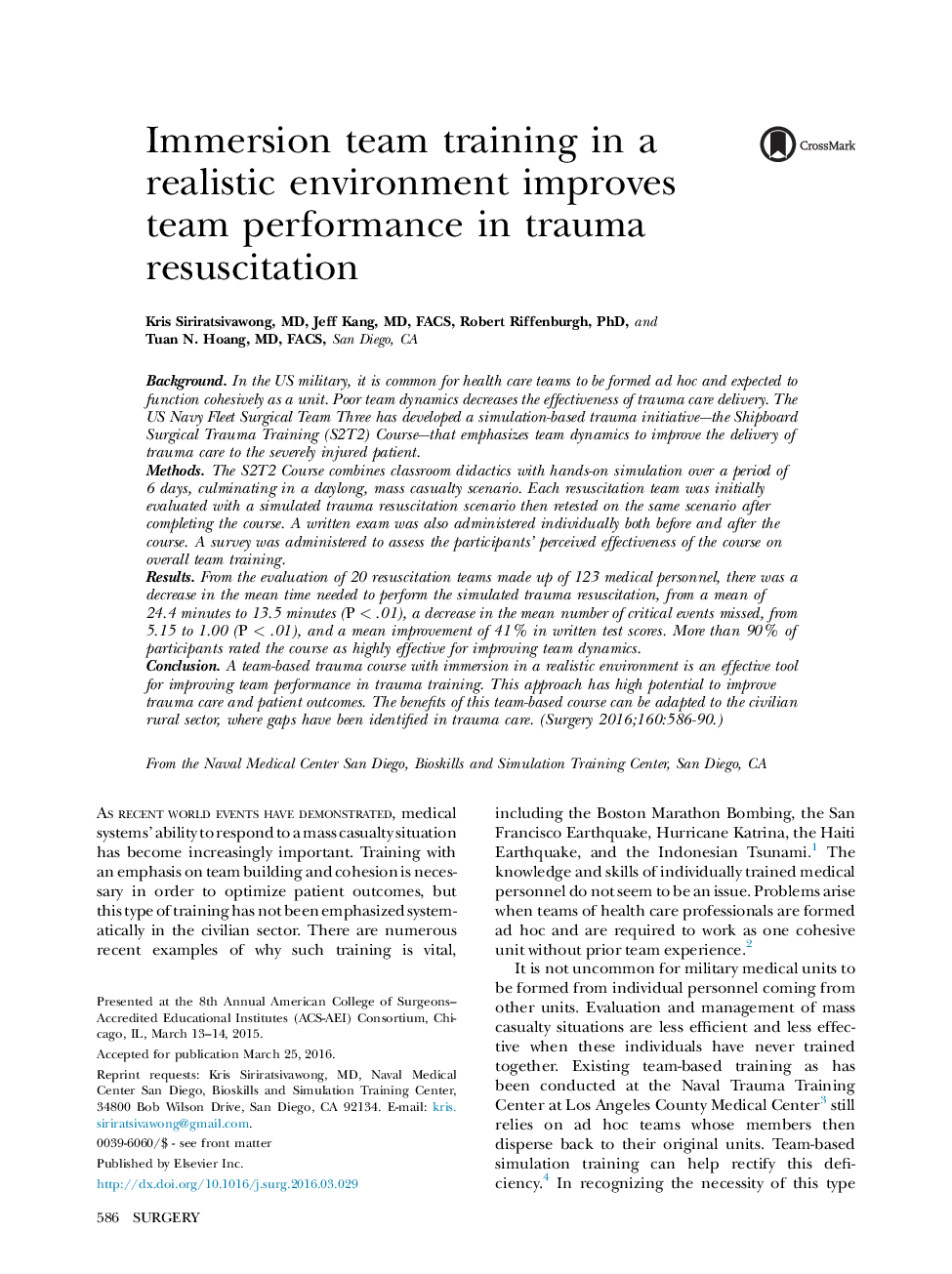| Article ID | Journal | Published Year | Pages | File Type |
|---|---|---|---|---|
| 6254849 | Surgery | 2016 | 5 Pages |
BackgroundIn the US military, it is common for health care teams to be formed ad hoc and expected to function cohesively as a unit. Poor team dynamics decreases the effectiveness of trauma care delivery. The US Navy Fleet Surgical Team Three has developed a simulation-based trauma initiative-the Shipboard Surgical Trauma Training (S2T2) Course-that emphasizes team dynamics to improve the delivery of trauma care to the severely injured patient.MethodsThe S2T2 Course combines classroom didactics with hands-on simulation over a period of 6Â days, culminating in a daylong, mass casualty scenario. Each resuscitation team was initially evaluated with a simulated trauma resuscitation scenario then retested on the same scenario after completing the course. A written exam was also administered individually both before and after the course. A survey was administered to assess the participants' perceived effectiveness of the course on overall team training.ResultsFrom the evaluation of 20 resuscitation teams made up of 123 medical personnel, there was a decrease in the mean time needed to perform the simulated trauma resuscitation, from a mean of 24.4Â minutes to 13.5Â minutes (PÂ <Â .01), a decrease in the mean number of critical events missed, from 5.15 to 1.00 (PÂ <Â .01), and a mean improvement of 41% in written test scores. More than 90% of participants rated the course as highly effective for improving team dynamics.ConclusionA team-based trauma course with immersion in a realistic environment is an effective tool for improving team performance in trauma training. This approach has high potential to improve trauma care and patient outcomes. The benefits of this team-based course can be adapted to the civilian rural sector, where gaps have been identified in trauma care.
